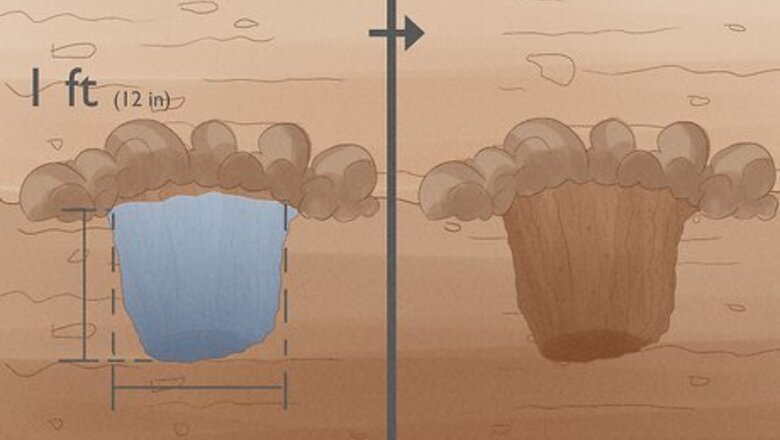
views
Choosing Your Planting Area
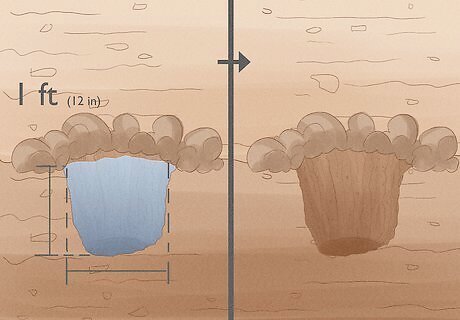
Select an area with good drainage. While weeping willows can help wet spots in your yard, planting in standing water is not advised. Willows need dry soil from time to time, so planting in an area with good drainage and that has loose soil will allow air and water to get through. You can test your soil for good drainage before you plant. Dig a hole that is 1 ft (0.30 m) square. Fill the hole with water and then let it drain completely. Once it drains, refill it again, and use a ruler to measure the water’s depth. Measure again after 15 minutes to see how much water has drained, and then multiple that amount by 4 to see how much water would drain in 1 hour. If the hole drains at a rate of 1 in (2.5 cm) to 6 in (15 cm) per hour, you have good draining soil.
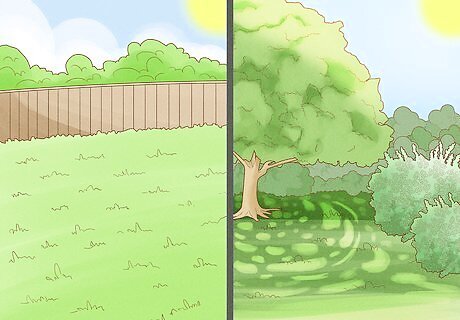
Make sure the area will get at least partial sun. Weeping willows need at least partial sun, which means at least 2 to 4 hours of sun per day. They can also grow in up to full sun, meaning 6 to 8 hours of sun per day.
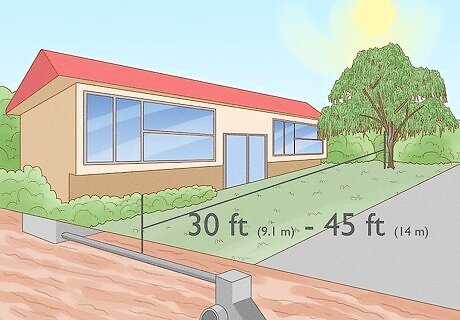
Plant away from sewers or power lines. Weeping willow roots can extend up to 30 ft (9.1 m) to 45 ft (14 m). The roots can get into some sewers and interrupt lines, so you should plant your willow at least 50 ft (15 m) away from any underground utilities, like sewers or underground power lines. You should also make sure the roots, which grow pretty close to the surface, won’t extend under a patio or any sidewalk. Keep in mind that your neighbors might have underground utilities on their property. When you’re choosing your place for planting, don’t threaten their utilities, either. EXPERT TIP “Ideally, you should plant your tree at least 50 feet (15 m) away from the house or any underground lines or pipes.” Maggie Moran Maggie Moran Home & Garden Specialist Maggie Moran is a Professional Gardener in Pennsylvania. Maggie Moran Maggie MoranHome & Garden Specialist

Choose an area next to fresh water if possible. Willows like lots of water. If you plant one near a body of fresh water, like a pond or lake, the tree can get a lot of its own water. Keep in mind that the roots of the willow can grow up to 45 ft (14 m) out from the base of the tree. You should plant the tree so that the roots will be able to extend fully before reaching the water.
Planting a Weeping Willow
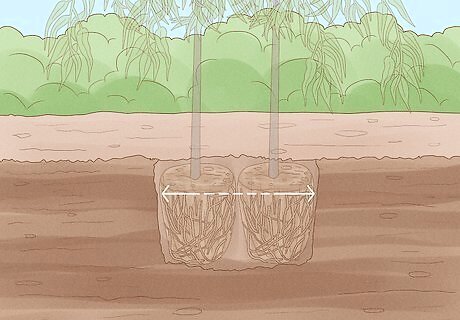
Dig a hole twice as wide as the root ball. The hole only needs to be as deep as the root ball, but it needs to be wide to encourage root growth. Measure the width of your root ball and multiple it by 2. Dig a hole with that diameter.
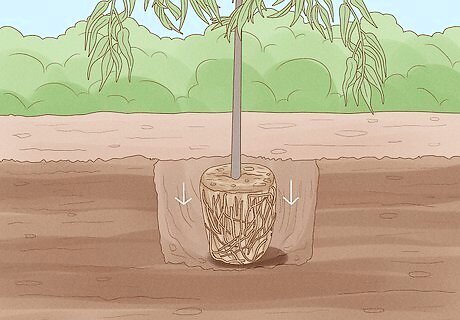
Set the tree in the middle of the hole. Make sure the root ball is in the middle of the hole. You should also make sure the tree is standing up straight. If you plant it titled to one side or the other, the roots might not take hold properly.
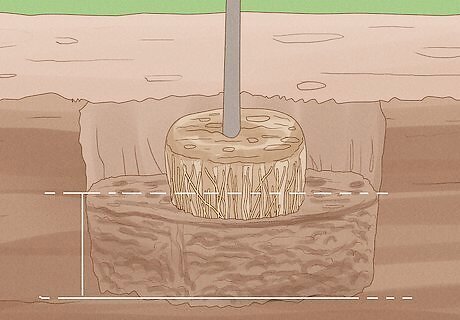
Fill the hole halfway with soil. You can use a standard potting soil to fill in the hole around the root ball. Don’t tamp down the soil, since this will interfere with the soil’s drainage. Just pour the soil into the hole, halfway up the root ball. Don’t add any fertilizer to the hole at this step. It will encourage the roots to grow in a circular direction around the root ball, and weeping willows grow best when their roots branch out.
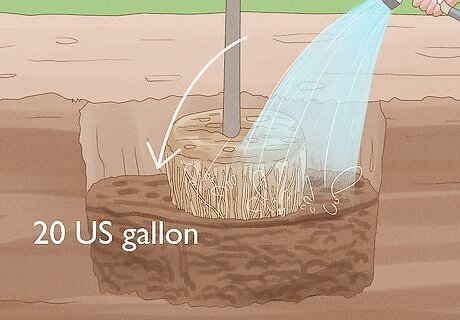
Pour 2 US gal (7.6 L) of water into the hole. Weeping willows really like water, although they’ll grow fine in drier soil. Once you’ve filled the hole halfway with soil, pour 2 US gal (7.6 L) of water evenly over the soil.
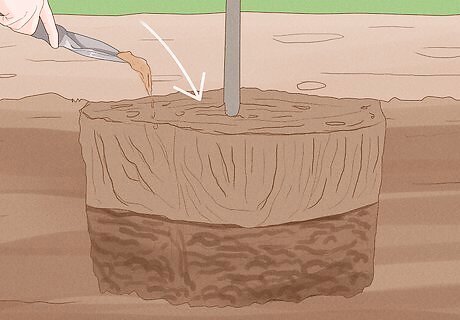
Fill the hole the rest of the way. Once you’ve watered the first layer of soil, fill the hole around the root ball to the top with soil. Once it’s full, lightly tamp down the top of the soil to even it out.
Caring for Your Willow
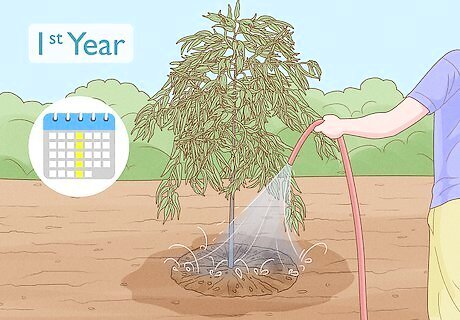
Water your willow weekly for the first year. Willows need water to grow, so you should water the planting area at least once a week. After the first year, you can water it less frequently. Just make sure the soil under the tree doesn’t dry out. If you notice the soil turning brown or a lot of leaves falling from the tree during the spring and summer, increase your watering frequency.
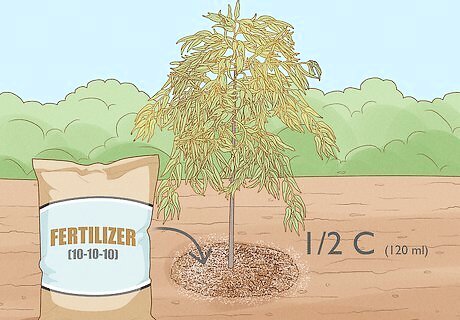
Add fertilizer in the spring if the tree looks pale. Most weeping willows don’t need additional fertilizer. But if you notice the tree leaves look a little pale, you can add fertilizer in the spring. Sprinkle ⁄2 c (120 mL) of 10-10-10 fertilizer around the area under the canopy of the tree.
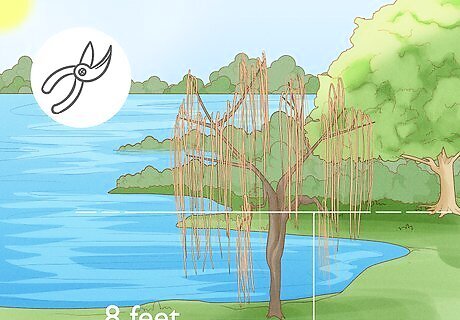
Trim mature tree branches. It’s best to trim a weeping willow when it’s dormant, in late winter or early spring. The longest branches of a mature tree should be trimmed so they are 6 ft (1.8 m) to 8 ft (2.4 m) above the ground.
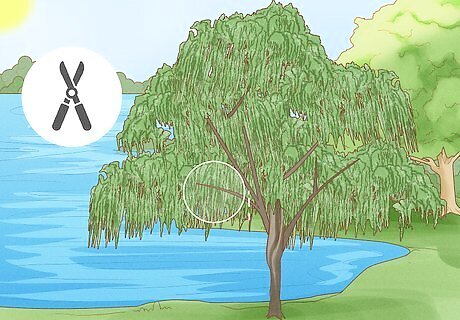
Prune young trees to promote growth. In young weeping willows, frequent pruning is necessary to make the trunk strong. Check your willow for any branches that are beginning to grow in a deep V shape from the trunk. Prune those branches by cutting away the branch that it least horizontal to the trunk. You should also cut away any green growth coming from the trunk itself. Prune young trees about once a week.




















Comments
0 comment